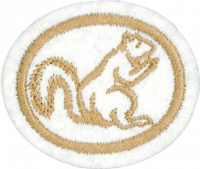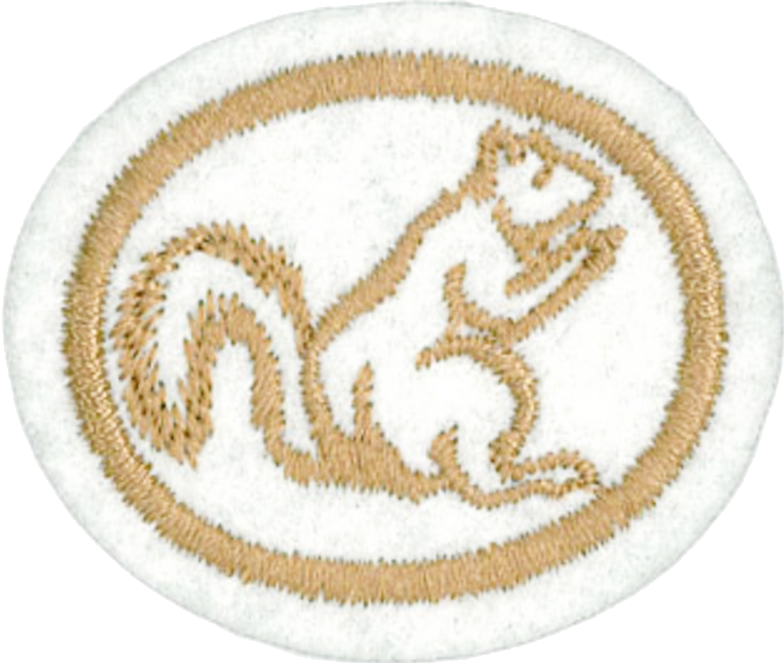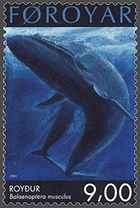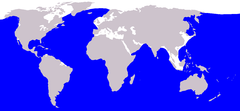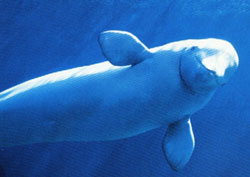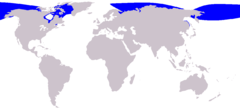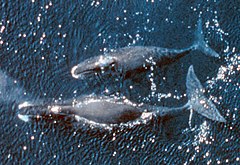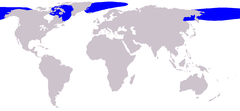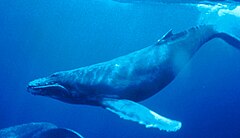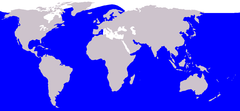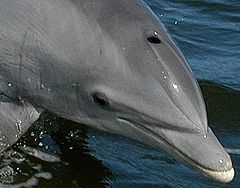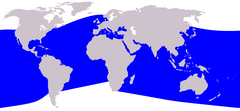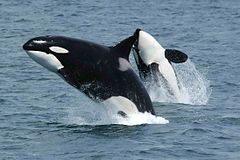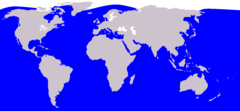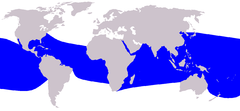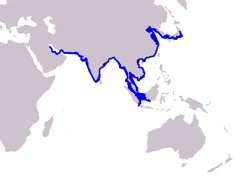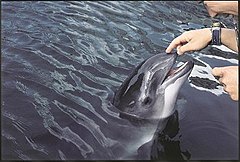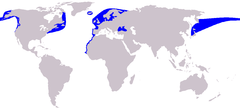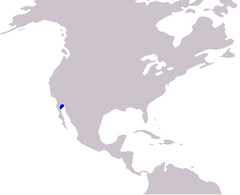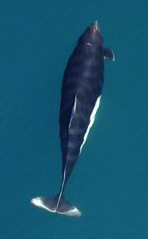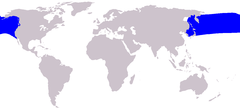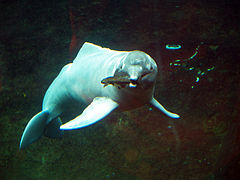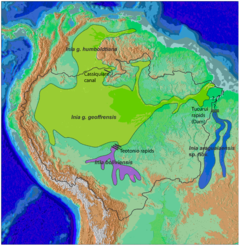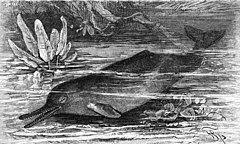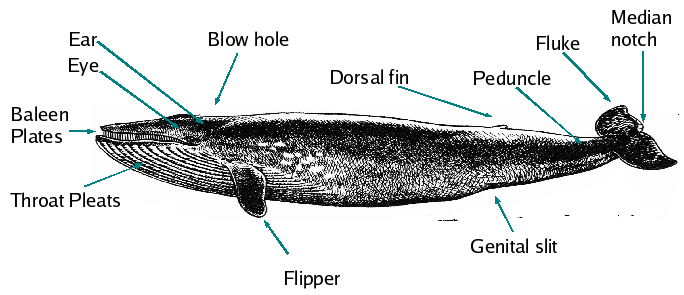Difference between revisions of "AY Honors/Mammals/Answer Key/pt-br"
(Created page with "<noinclude>") |
(Created page with "</noinclude> <!-- 1. Em que dia da criação foram criados os mamíferos? -->") |
||
| Line 169: | Line 169: | ||
{{clear}} | {{clear}} | ||
| − | + | <noinclude></noinclude> | |
| − | <noinclude | ||
| − | |||
{{CloseReq}} <!-- 3j --> | {{CloseReq}} <!-- 3j --> | ||
{{CloseReq}} <!-- 3 --> | {{CloseReq}} <!-- 3 --> | ||
Revision as of 21:34, 2 July 2021
1
{{
2
- 1. Endothermic (Warm-blooded)
- 2. Hair or Fur
- 3. Mammary (milk producing) glands
- 4. Sebaceous (fat-secreting) glands
- 5. Heterodont Dentition (Different shapes of teeth in their mouths)
3
3a
3b
3c
3d
3e
3f
3g
3h
The Artiodactyla are mammals with hooves and which bear most of their weight on an even number of toes. They are sometimes called the even-toed ungulates (ungulates are hooved animals).
3i
3j
4
- Bats eat flying insects
- Dogs provide assistance to the blind and comfort to the sick.
- Cats keep down the rodent population
- Hyena is a scavenger and helps keep the environment clean and free of disease
- Bears carry the nutrients of the salmon they eat into the forest. This actually completes the mineral cycle. Minerals start in the forest and are carried by the rains into the streams, then rivers, and finally into the ocean. The salmon take the minerals from the ocean environment and carry them back to the streams and rivers where they are eaten by the bears. The bears carry these minerals back to the forest when they defecate or die. If this cycle was not complete the forest would eventually not have enough of the nutrients needed to be healthy.
- When wolves were put back into the ecosystem of Yellowstone, we learned how important one animal is in helping form a healthy ecosystem. Without wolves, the Elk could eat and drink without fear, and they had eaten most of the willow along the river. There were very few beaver left. When the wolves came back into the environment, the elk were afraid of certain areas where a wolf might hide and this allowed the willows to grow back. Now there is a growing beaver population.
- Any others that the Pathfinder can think of. Accept all reasonable answers.
5
- Skunks can make a neighborhood smell quite bad
- Tigers, lions, bears, wolves and many other carnivorous mammals have killed and sometimes eaten people. They also prey on livestock.
- Groundhogs, prairie dogs, gophers, moles and many other burrowing animals can create tripping hazards for humans, horses and other mammals
- Elephants can do quite a bit of damage to gardens and yards
- Mice can eat a large amount of grain and reproduce so rapidly that large quantities of food can disappear quite quickly.
- Rats can carry disease such as bubonic plague
- Deer can carry a disease known as chronic wasting disease
- Beavers can back up streams and flood areas as well as cut down trees that are part of an orchard or yard
- Many mammals can carry rabies or distemper and pass these diseases to humans or pets
- Coyotes in urban settings can eat pets or spread garbage
- Deer, moose and other large mammals are involved in thousands of car accidents every year. Sometimes these accidents include human fatalities.
- Humans are the most dangerous destructive mammals of all.
Accept all reasonable answers.
6
- Salt Water Mammals
- 1. Whales
- a. Balaenoptera musculus (Blue Whale) lives near the surface of the ocean and can be found in every ocean of the world.
- b. Delphinapterus leucas (Beluga Whale) lives in Arctic and Sub-Arctic waters. Some will migrate to warmer waters in the summer and even swim up northern rivers into brackish (partly-salty) waters to hunt.
- c. Balaena mysticetu (Bowhead Whale) lives solely in the Arctic near the surface of the ocean.
- d. Megaptera novaeangliae (Humpback Whale) lives in all the oceans in the world except the polar seas. They live mostly in shallow water.
- 2. Dolphins
- a. Tursiops truncatus (Bottlenose Dolphins) live in warm and temperate seas and oceans all over the world.
- b. Orcinus orca (Orcas or Killer Whales) live in all the oceans and many of the seas in the world. (Even though this aquatic mammal has the name of "whale" it is in the dolphin (Delphinidae) family)
- c. Stenella longirostris (Spinner Dolphin):
- 1.Eastern Spinner Dolphin (S. l. orientalis), found in the tropical eastern Pacific.
- 2.Central American or Costa Rican Spinner Dolphin (S. l. centroamericana), also found in the tropical eastern Pacific.
- 3.Gray's or Hawaiian Spinner Dolphin (S. l. longirostris), found in the central Pacific around Hawaii but represents a mixed bag of broadly similar subtypes found throughout the world.
- 4.Dwarf Spinner Dolphin (S. l. roseiventris), first found in the Gulf of Thailand.
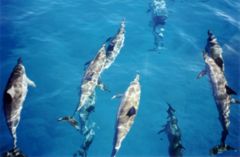
- d. Lagenorhynchus obliquidens (Pacific White Sided Dolphin) lives in the Pacific Ocean
- 3. Porpoise
- a. Neophocaena phocaenoides (Finless Porpoise) lives in the shallow coastal waters of Asia especially around India, China, Indonesia and Japan. A unique fresh water population is found in the Yangtze River. At the western end, their range includes the length of the western coast of India and continues up into the Persian Gulf.
- b. Phocoena phocaena (Harbour Porpoise) is widespread in cooler coastal waters in the Northern Hemisphere, largely in areas with a mean temperature of about 15°C. In the Atlantic, Harbour Porpoises may be present in a concave band of water running from the coast of western Africa round to the eastern seaboard of the United States, including the coasts of Spain, France, the United Kingdom, Ireland, Norway, Iceland, Greenland and Newfoundland.
- c. Phocoena sinus (Vaquita) is a very endangered species that lives only in the Sea of Cortez, the northern part of the Gulf of California.
- d. Phocoenoides dalli (Dall's Porpoise) ranges across the north Pacific Ocean from southern California to southern Japan (including the Sea of Japan in the south up to the Bering Sea in the north).
- 1. Whales
7
The Balaenoptera musculus (Blue Whale) is the largest animal on the planet. Specimens have been recorded over 30 meters in length and are estimated to weigh more than 90 tonnes. These whales have been seen in every ocean of the world and feed by filtering the water through the giant balleen plates in their mouth. Adult whales can eat up to 4 tonnes krill (euphausiids) and copepods each day and the calves can drink up to 400 litres/day.
These amazing creatures were hunted by man to the brink of extinction. Over 378,000 were killed to provide oil and whale meat. The population of B. musculus (Blue Whales) is now only about 1% of the total 100 years ago.
8
| Tip for earning from home during the pandemic | |
| When confined to home, this can be done in the backyard. |
http://www.enature.com/home/ is a good place to find wild animals in your area. You can search by zip code for mammals, and also any other animals and plants, so it's a useful resource for any Nature honor.
9
A good opportunity for a story would obviously be the 5 hour search in the last requirement, if you can't think of another story about wild mammals that you have observed.
